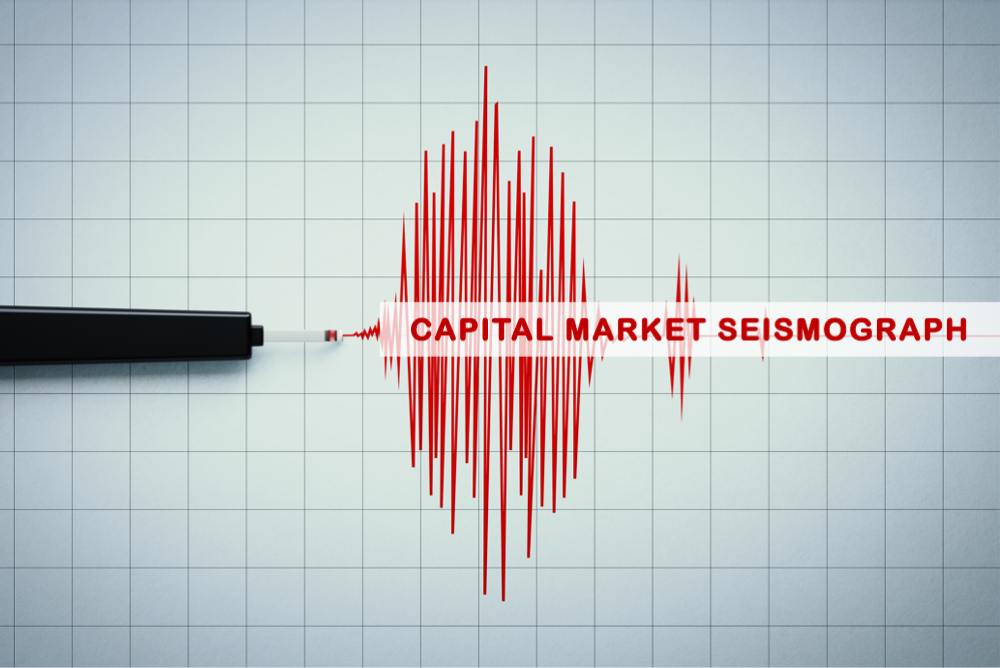Capital market seismograph remains relaxed.

After the turbulent stock market days of the last week, we were very curious about the current result of the capital market seismograph. Would the seismograph, which is supposed to warn of massive stock market storms in good time, strike out? "Our indicators tend to suggest that the setbacks on the stock markets are an exaggeration. We do have to be prepared for turbulent times lasting longer than expected - but these do not necessarily have to be bad for stock investors," informs Oliver Schlick, Managing Director of Secaro GmbH, who regularly calculates the model and links it to investment recommendations.
As you know, the seismograph combines various economic variables, such as early economic indicators, interest rate developments or price fluctuations on the stock markets. From these, the probabilities for three market states in the next month are distilled, modelled on traffic lights. Green stands for the expectation of a calm, positive market - investors can invest in a relaxed manner. Yellow indicates the probability of a turbulent positive market. And red indicates the probability of a turbulent-negative market. If this rises significantly, a stock market storm is looming and it is time to get out.
"A new script is currently being discussed in the markets. The key question is whether the US Fed is not in danger of losing control of inflation and would then end up having to apply the brakes more than the stock markets would like. Because in that case, while corporate profits would continue to rise, valuations (price-earnings ratios) could fall so much that the balance would turn negative," Schlick explains. As yet, the economist continues, such a picture cannot be reconciled with the seismograph's probability forecasts. "Therefore, the recommendation remains: significantly overweight. But we are watching this very closely."
The bottom line:
The economic component of the private-wealth stock market indicator had given a buy signal the day before yesterday. Therefore, the long-term corridor for the equity exposure in the private-wealth stock market model was raised to 75 to 115 per cent.
Within the corridor thus defined, the results of the capital market seismograph decide on the exact short-term positioning. Since the allocation recommendation of the seismograph indicates "overweight", the equity quota of the private-wealth stock market model is set at 115 percent of the equity share considered appropriate by the respective investor individually.
In concrete terms, this means that anyone who has defined an optimal equity quota of 60 percent for themselves, for example, should now expand this to 69 percent.
Yours sincerely,
Klaus Meitinger
Note: Despite careful selection of sources, no liability can be accepted for the accuracy of the content. The information provided in private wealth is for informational purposes and is not an invitation to buy or sell securities.